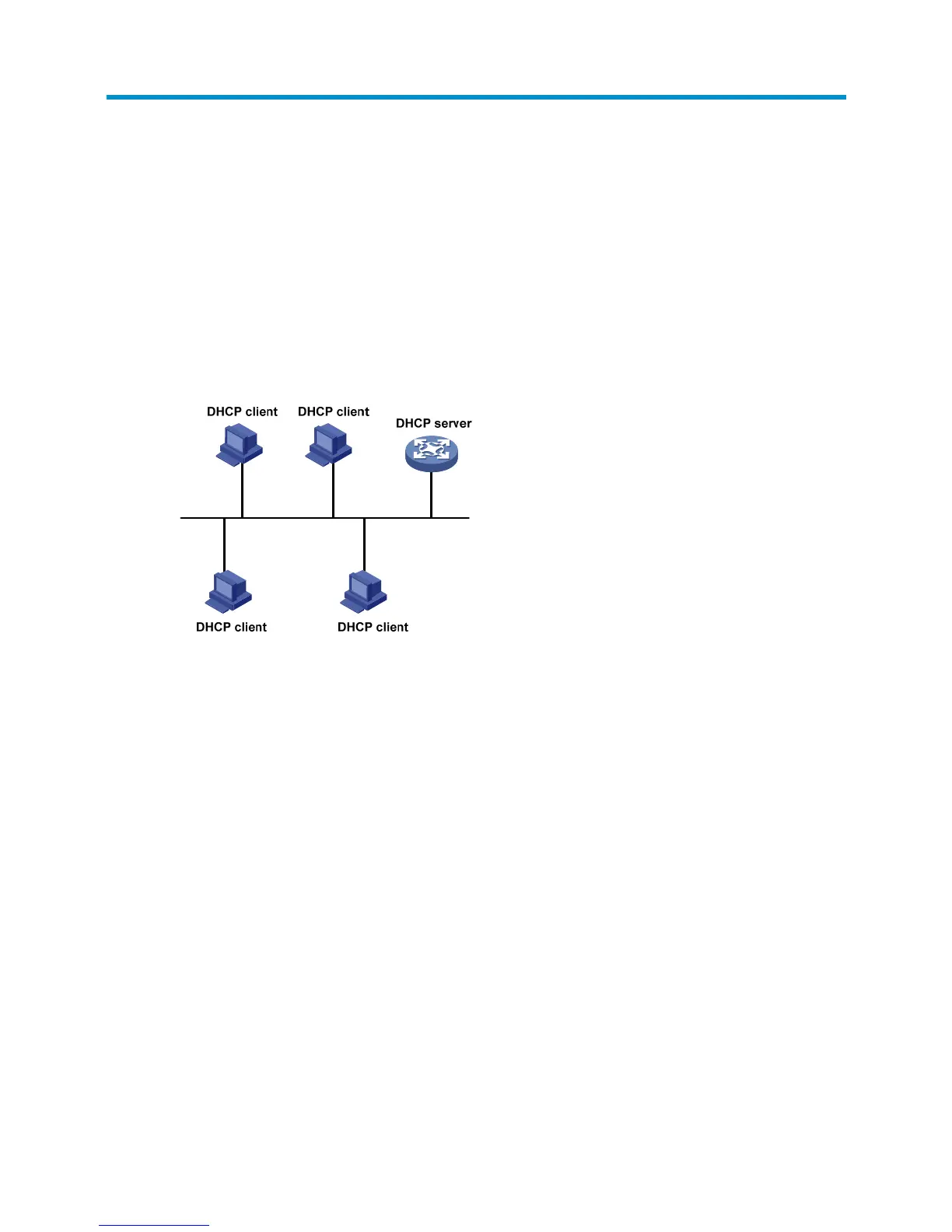292
DHCP overview
The Dynamic Host Configuration Protocol (DHCP) provides a framework to assign configuration
information to network devices.
DHCP uses the client-server model. Figure 266 sho
ws a typical DHCP application.
A DHCP client can obtain an IP address and other configuration parameters from a DHCP server on
another subnet through a DHCP relay agent. For more information about the DHCP relay agent, see
"Configuring DHCP relay agent.
" You can enable the DHCP client on an interface. For more information
about the DHCP client configuration, see "Configuring VLAN interface."
Figure 266 A typical DHCP application
DHCP address allocation
Allocation mechanisms
DHCP supports the following mechanisms for IP address allocation:
• Static allocation—The network administrator assigns an IP address to a client (for example, a
WWW server), and DHCP conveys the assigned address to the client.
• Automatic allocation—DHCP assigns a permanent IP address to a client.
• Dynamic allocation—DHCP assigns an IP address to a client for a limited period of time, which is
called a lease. Most DHCP clients obtain their addresses in this way.

